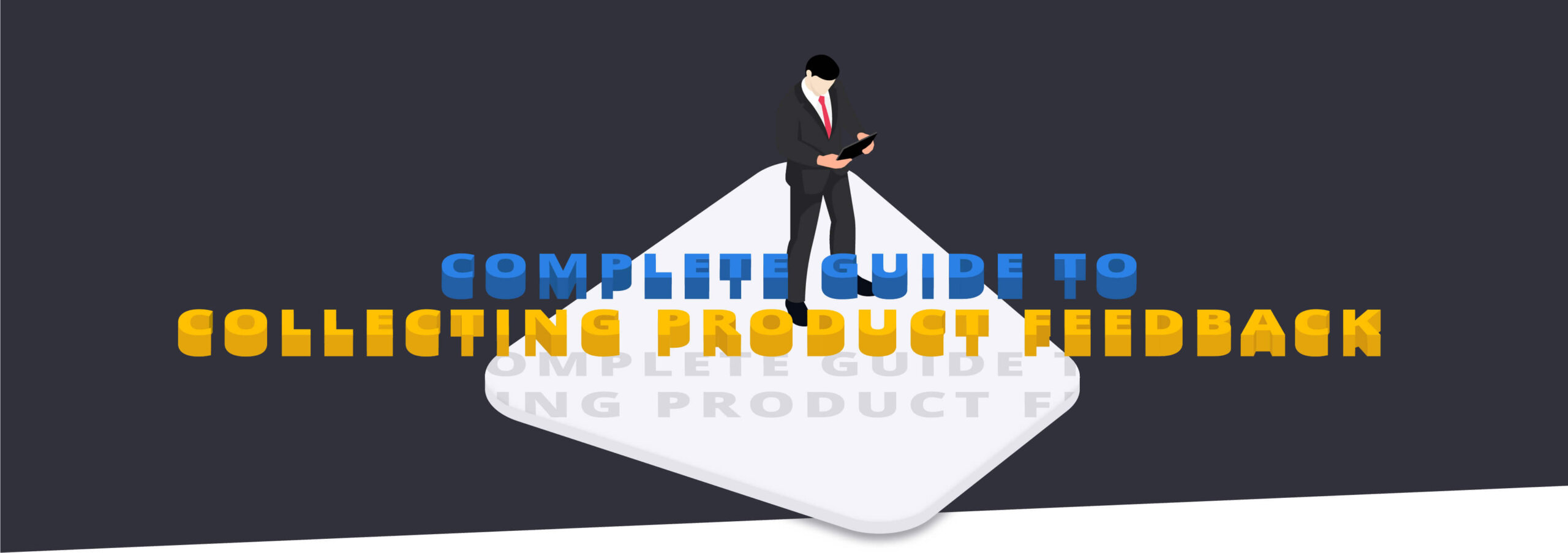It’s 2020 and the world has completely turned on its head. Businesses have found themselves scrambling to adapt to the new regulations, searching for creative ways to maintain the same levels of efficiency with a remote workforce. This movement is so large scale, in fact, that Time magazine is calling it, ‘the world’s largest work from home project’. And what’s more, this way of working is likely here to stay for some time, even after the crisis is over.
Amidst all the chaos, however, something interesting is happening. There is one particular industry which hasn’t fallen victim to the ramifications of a remote working model: the Software-as-a-Service (SaaS) industry.
In this article, Mopinion dives into why this newfound remote workforce has recently revealed a lot of the benefits of working with SaaS solutions. Let’s take a closer look…
What is SaaS?
As defined by TechRader, SaaS is a cloud-based service where instead of downloading software on your desktop PC or business network to run and update, you instead access an application via an internet browser. The software application could be anything from office software to unified communications among a wide range of other business apps that are available.
The Benefits of SaaS in a Remote Working Environment
Unlike many on-premise solutions, SaaS infrastructure has actually profited from the new working from home culture. SaaS solutions, which aid in keeping communications tight, have recently found themselves in a unique position to serve employees working remotely.
But what is it exactly that sets SaaS solutions apart from other software solutions in these strange times?
1. SaaS is Scalable
The very nature of SaaS solutions being delivered over the cloud enforces a requirement for these solutions to be elastic in order to leverage the cloud benefits. In other words, growing businesses need to know that the solution is going to accommodate them, both now and in the future, as the company grows and as their usage grows.

Cloud architect Justin James explains in TechRepublic:
Out of the box, many applications cannot scale well. They are not designed to handle scenarios like multiple users accessing the same pieces of data, load balanced servers, etc.
This scalability plays a key part in the strategic planning of a business as well as offers a competitive advantage – the ability to grow and shrink quickly. So how do they offer this? Many SaaS solutions offer a wide range of packages that are applicable to different types of users and companies.

Free White Paper: Increasing Online Sales with Customer Feedback
Looking for new ways to boost online conversions and increase sales on your websites and apps?
2. SaaS is Adaptable
SaaS solutions also facilitate adaptability as they can easily be deployed and managed from any location. This provides a lot of benefits for organisations navigating the current crisis, especially as it pertains to information sharing and communications. Employees can access business-critical information from their laptops, phones and tablets, which in turn has evolved the concept of ‘office working’ into a virtual business environment.

3. SaaS facilitates a quick and efficient transition to digital
It’s safe to say that we’re in the midst of an abrupt transition. Whereas most of us were previously accustomed to working in an office environment which consisted of meeting with colleagues and clients face-to-face, we are now sitting at the kitchen table accompanied by only our laptops, a cup of coffee and maybe a cat or two. This change in environment presents a lot of challenges in terms of communication and productivity. We now rely heavily on digital solutions to help us get the job done.

Thankfully, SaaS solutions are there to ‘soften the blow’ and ease the transition to digital for us. Think of how quickly companies adopted web conferencing software such as Google Meet, Zoom or Skype and project management software such as Slack, Asana and JIRA. These types of solutions have simplified our lives as employees / employers, making distance a non-issue.
Despite all of the benefits of working with SaaS solutions at home, there are some obstacles that remain…
Challenges that remain for SaaS providers and users
It’s important to point out, however, that it’s not all sunshine and rainbows for SaaS solutions. There are a number of challenges that must be considered and dealt with (by both SaaS providers and their users):
1. Privacy / Information Security
Due to factors such as access and storage, privacy and information security are still concerns of many SaaS users. Take the video conferencing software Zoom, for instance. Zoom is used by millions of users worldwide, having experienced major growth since the start of the pandemic. However, Zoom has recently been criticized for “security lapses and poor design choices” that have resulted in lots of scrutiny towards the software. The Zoom iOS app was sending user data to Facebook, there were ‘Zoom bombings’ (where hackers broke into class meetings), a Windows-related Zoom bug and more. Zoom has since cleaned up a lot of these issues, making it safer to use their software, but it remains a challenge for them and all other SaaS solutions which hold and store user data.

Then there is the international standard known as ISO 27001. The certification demonstrates that the SaaS solution you’re using has the full spectrum of security best practices in place as it encompasses compliance and governance. This is one step we ourselves have recently initiated here at Mopinion. In fact, more and more companies in industries such as financial services and government are now requiring that their SaaS vendors be ISO 27001 certified, especially in Europe, Asia and the US.
2. Miscommunications / Business Etiquette
Another interesting challenge will be sidestepping miscommunication and the blurred lines of (digital) business etiquette.
Probably most of you reading this have seen the viral Zoom recording of that poor employee who didn’t realise their video was ON and proceeded to use the bathroom in the midst of a conference call with ten other colleagues? Well, that’s exactly what I’m talking about…

Source: Userlike
With SaaS solutions in our homes, how will users know when something is appropriate and when it’s not? Will your point be misconstrued in a group chat on Google Hangouts? Can you make that sarcastic joke on Slack without there being some sort of miscommunication between you and colleagues? Is it acceptable to have dirty laundry in the background while you’re on a video call with your managers?
Bottom line: there is no user manual for this new way of digital working and that’s going to be a bit of a hurdle now and in the coming months amongst SaaS solutions.
What can you do? Make sure you read the fine print before employing any new software. For example: Is the SaaS company ISO 27001 compliant? How is your data stored? Where is your data stored? These are things to think about…
So which tools are being used most with the new working from home model? Let’s take a look…
So which SaaS solutions are coming out on top?
Here are some of the most popular types of SaaS solutions that organisations have adopted in recent months.
Project Management & Collaboration Software
Project management (PM) and collaboration software help teams plan and synchronise their work in an organised manner, both from the office as well as remotely. Many tools in this space have experienced a serious spike in the amount of users and subscriptions as companies continue to urge employees to work from home. The reason being is that the collaboration skills needed by remote teams are simply a lot different from the skills needed by more traditional teams that work in an office setting.

The current crisis, in fact, has served as an interesting case study for the use of these tools. When teams started working remotely back in March of this year, employees no longer had the opportunity to each other’s desks to discuss issues in real-time. As a result, they resorted to their trust PM tools, which have helped ‘stay in-the-loop’ and manage actions from a distance.
Here are some of the most popular project management tools:
- Slack: a unique collaboration tool which enables users to create projects, channels and chat directly with one another.
- Atlassian JIRA: a project tracking software ideal for managing software development projects.
- Asana: another great collaboration tool where users can create projects, assign work to teammates, specify deadlines, and communicate about tasks directly in the software.
- Basecamp: a project management tool which brings teams together with its message boards, schedules, to-do lists, group chat, documents & file storage, and more.
- Trello: another great Atlassian product which employs a Kanban-style list making approach to project management.
- Friyay.io: a rather new, but up-and-coming project management platform that caters to remote-first teams.
Looking for more tools? Check out this article.
Web Conferencing Software
Having been thrust into a remote working environment, members of the global workforce have quickly learned to rely on web conferencing and video chat software. Not only do face-to-face video calls help teams stay motivated and keep up productivity, but it also gives employees a chance to see their team members and not feel so isolated. These tools have also made the transition to working remotely a relatively easy one in that much of these software are easily installed and up and running in no time.

Here are some of the most popular web conferencing software:
- GoToMeeting: (a LogInMe company) that enables conference calling (desktop and mobile), video conferencing, screen sharing and more.
- Zoom: one of the most popular web conferencing software at the moment, which allows for web conferencing, chat, webinars, etc.
- Google Meet: easy-to-use web conferencing software which is easily accessible to Google Suite users.
- Microsoft Teams: software which combines chat, video meetings, file storage and application integration in one.
- Whereby: provides for easy and flexible meetings on the go.
- Skype for Business: well-known enterprise instant messaging and video conferencing software, with extra security and control thanks to Microsoft.
Looking for more tools? Check out this article.
Other SaaS Solutions
In addition to software that mainly facilitate strong internal communications, there are also other types of software which have seen a steady increase in usage and popularity under the current circumstances such as Voice of Customer (VoC) software.
Now I know what you’re thinking, how exactly does VoC fit into all of this? Let me explain.

In times of uncertainty, customer expectations rise and customers develop increased needs around things like relevance, speed and service continuity. They also seek more direct and/or empathetic communication from brands. This calls for a clear priority among companies to focus on amplifying their digital channels.
In retail for example, now that the more traditional service methods and physical stores are no longer as easily available to customers, they expect companies to deliver enhanced digital experiences. This transition puts an immense amount of pressure on organisations to monitor and keep a pulse on the satisfaction and experiences of these customers.
Take it from IBM:
Customers continue to be won and lost based on the quality of their experiences, now more than ever. The global state of emergency is putting extreme pressure on businesses and their digital touch points.
Tools such as online feedback and survey tools have been helping companies do this for a while now. The only difference now is that more organisations are recognising the value of these tools as a result of the newfound, ‘extreme pressure’ and new working conditions. They must cater to their customers and make sure everything on their website is working properly and that from a ‘distance’. Employees working from home require software that enables them to monitor but also act on the insights they gain from customers in order to maintain their competitive edge.
Here are some of the most popular VoC software:
- Mopinion: an all-in-one user feedback software for websites, mobile apps and email campaigns that includes feedback analysis and action management tools.
- Medallia: a customer experience platform with digital VoC capabilities.
- Qualtrics: an experience management platform used to collect customer, product, brand & employee experience insights.
- InMoment: customer experience intelligence & management platform.
- Apptentive: user feedback software catered towards app users.
- SurveyMonkey: online survey software for individuals and businesses.
Curious to learn more about tools in the VoC landscape? Check out our market map here.
What does the future hold?
SaaS infrastructure is successfully helping remote teams collaborate and communicate in ways that may even be superior to pre-crisis times when everyone was still going into the office everyday. And as operations continue to digitise and these flexible work arrangements become more common among organisations, I think it’s safe to say SaaS will be around for a while.
It’s only a matter of time before we see companies with fully SaaS tech stacks in their midst. In fact, they’re level of performance is arguably much better than out-of-the-box solutions, seeing as how they typically offer: affordable pricing, scalability, adaptability, easy implementation, high level of customer support and therefore a huge competitive edge.
Are you ready to get your SaaS tech stack in order?
Ready to see Mopinion in action?
Want to learn more about Mopinion’s all-in-1 user feedback platform? Don’t be shy and take our software for a spin! Do you prefer it a bit more personal? Just book a demo. One of our feedback pro’s will guide you through the software and answer any questions you may have.






